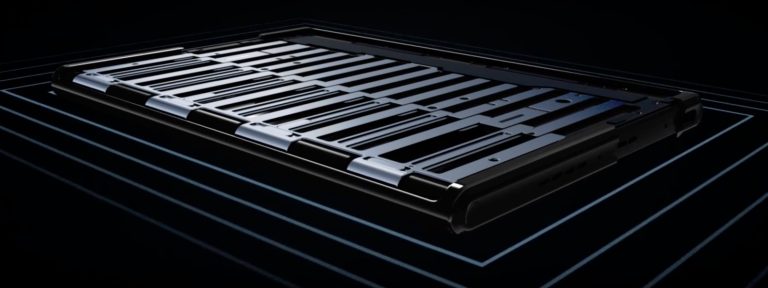The foldable phone race is heating up, as Chinese smartphone makers are finally ready to put more pressure on Samsung, which is the king of this smartphone form factor for the time being. Oppo unveiled the Find N earlier this week, and it should compete against the Galaxy Z Fold 3. Then, Huawei launched the P50 Pocket — a Flip 3 alternative. These devices will put more pressure on Samsung to accelerate innovation and reduce entry prices, provided it wants to keep leading the market. And it just so happens that Samsung has plenty of ideas for foldable phones, including devices that feature rollable displays that fold or roll around an axis. Now, a recent discovery reveals a Samsung dual-rollable phone unlike anything seen in the industry.
Samsung isn’t the first to conceive a rollable phone concept. These are handsets that look just like traditional non-folding phones. But they feature OLED screens that can bend around one of the sides. Users can roll out the screen to extend the display real estate when a tablet-like device better fits their needs. And they can roll the screen back in when a phone display would do.
LG, Oppo, and TCL already showed off such devices, although none of them is available for purchase. Moreover, LG closed up shop before launching its rollable phone. But this is where Samsung’s rollable phone in the images below stands out.

Samsung’s dual-rollable phone
Dutch blog LetsGoDigital discovered Samsung’s new patent titled Electronic device including display having plurality of states and method for controlling same. The World Intellectual Property Office (WIPO) published it on Thursday, with Samsung having filed it in mid-May with the organization.
The blog calls the Samsung rollable phone the Galaxy Z Fold Dual Slide, but that’s not an official marketing name. As it happens with patents, this technology might never see the light of day in commercial products. Or Samsung could use only a portion of these innovations in future devices.
As you can see in these images, the Samsung rollable phone looks rather silly when you roll out both the vertical and the horizontal sides of the display. But there might be use cases where phone buyers might appreciate as much extra display real estate as possible. The resulting device doesn’t have to be symmetrical and doesn’t have to become a tablet. That’s what we expect foldable and rollable devices to look like, but it’s only because most devices feature some sort of rectangular screen.
As crazy as this dual-rollable Samsung phone design looks, it’s the tech that’s more interesting.

The design challenges
You need to roll two display parts around two axes to make everything work. The first is the top horizontal side. The second is the right vertical side. Both of them have curved edges because that’s where the screen rolls. To initiate the rolling mechanism, you have to press a button. Then you swipe on the screen to decide where to extend the display.
What’s more puzzling is something you might not necessarily consider when looking at rollable displays. The rolling mechanism also moves a part of the structure beneath the OLED screen. The resulting device still has to have a sturdy screen that you can touch without damaging it. It’s unclear how Samsung would protect the screen’s integrity at the top side if part of the screen structure moves to the right while a part of it has to move upwards. Here’s how Oppo does it with the Oppo X concept:

Finally, there’s the strange camera contraption. Not only does this Samsung rollable phone feature a single rear-facing camera system, but the back camera is placed in the same location as the front camera. That’s a highly unusual design, unlike anything we’ve seen from other recent smartphones.
Such a camera placement indicates the dual-rollable phone would have to be quite thick to accommodate two cameras sitting back to back. On the other hand, a rollable phone with two moving sides might have to be thicker than others to accommodate the extra layers supporting the rolled-out display.








